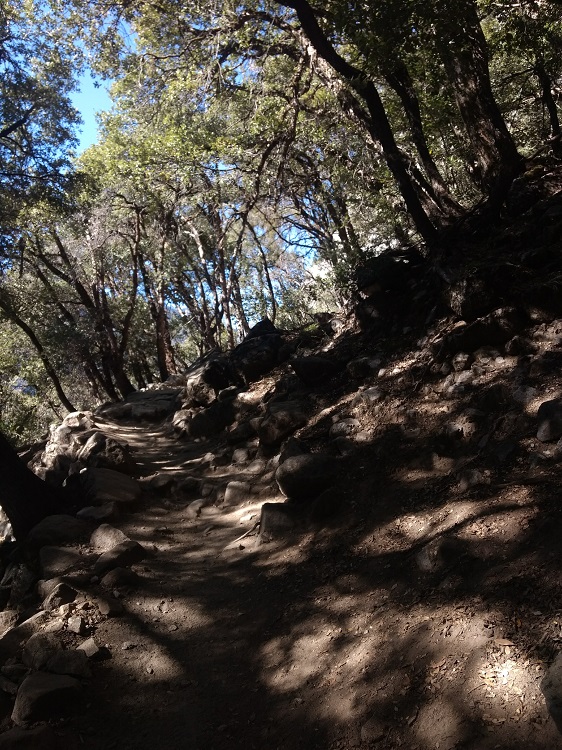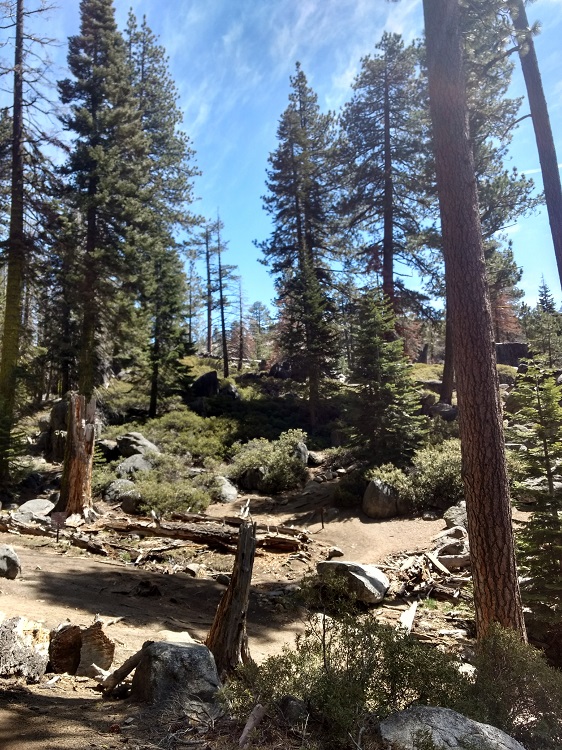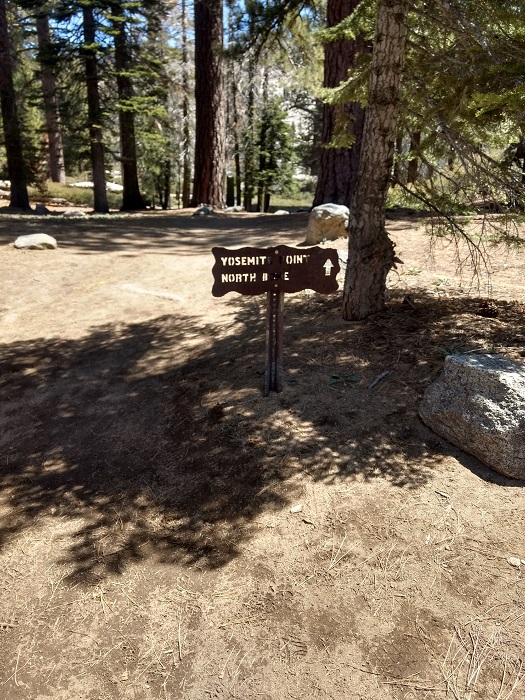Hiking The Upper Yosemite Falls Trail
Upper Yosemite Falls is one of Yosemite National Park’s oldest trails. The trail ascends from the floor of Yosemite Valley to the top of Yosemite Falls which is also North America’s tallest waterfall. This waterfall extends 2,425 feet above the valley floor and during snow melt months, is quite impressive. Upper Yosemite Falls Trail is known for being a real life StairMaster. The trail begins in the Yosemite Valley near Camp 4 and from that point on is mostly a series of switchbacks up to the top of the Yosemite Falls lookout.
If you’re not up for the full hike to the very top, Columbia Rock, which is about half way up the trail is where a lot of people go just to view the falls. Columbia Rock offers an excellent vantage point of Upper Yosemite Falls while leaving over half of the switchbacks to the rest. However, hiking to the very top is worth the view. The top of Upper Yosemite Falls offers stunning panoramic views of Yosemite National Park. There’s also a stomach churning, narrow staircase that leads to the ledge of where Yosemite Creek goes over the fall. If you’re up for it, continue on past Upper Yosemite falls to Yosemite Point and step out on to the ledge for a look of the park.
Do you have any updates to the hiking trail or want to share your hike/pictures? Please leave a comment below.
- Overall Views: 100%
- Overall Difficulty: 85%
Upper Yosemite Falls Trail Quick Facts:
- Elevation: 6,784 feet.
- Elevation Gain: 3,438 feet.
- Estimated Distance: 5 miles.
- My Actual Distance: 7 miles.
- Estimated Time: 6-8 hours.
- My Time: 5:06 hours.

Upper Yosemite Falls Trail Directions:
Upper Yosemite Falls Trail Pictures:
- The beginning of Yosemite Falls Trail near Camp 4 in Yosemite National Park.
- The lower portion of the trail is mostly shaded by Oak trees until the hike gets up into the granite cliffs.
- The view of Yosemite Valley from near Columbia Rock.
- The view of Yosemite Falls near Columbia Rock.
- The switchbacks get worse.
- The worst of the switchbacks.
- Finally at the top!
- Meadows line the top of the trail.
- The view of the valley looking back to the Sierra from the top of the switchbacks.
- The narrow staircase leading down to Yosemite Falls Overlook.
- This staircase is only really big enough for one person.
- Looking over the edge of Yosemite Falls with a drop of over two thousand feet.
- The creek that feeds Yosemite Falls.
Who Upper Yosemite Falls Trail Is For:
Advanced Hikers: This is a great bucket list type of hike. The constant switchbacks up a few thousand feet will wear on you but the views of Yosemite Valley as well as the feeling of accomplishment of getting to the top make this hike worth it. The overlook at the top of the falls are incredible.
Expert Hikers: For even those people who are expert hikers, the persistent switchbacks will be a good leg burner. For those wanting to extend their trip at the top, try some of the connecting trails like heading down Yosemite Creek, to El Capitan, or checking out Yosemite Point.
It’s always a good idea to be aware of what type of hiking level you’re at.
Best Time Of Year To Hike Upper Yosemite Falls Trail:
Summer can be warm on the trail so bring plenty of water and food for energy. As soon as you get out of the valley, most of the trail is exposed to the sunlight. Fall gives way to more mild weather again with cool nights and warm days. As it gets later into the fall you can expect winter weather. After winter storms, snow and ice can be on the upper portions of the trail and lead to slippery conditions. Use caution if going up the trail during this time as there has been a history of falls because of wet and icy granite.
Thunderstorms are common any time of the year but especially during late spring and during the summer. Always be aware of weather conditions.























